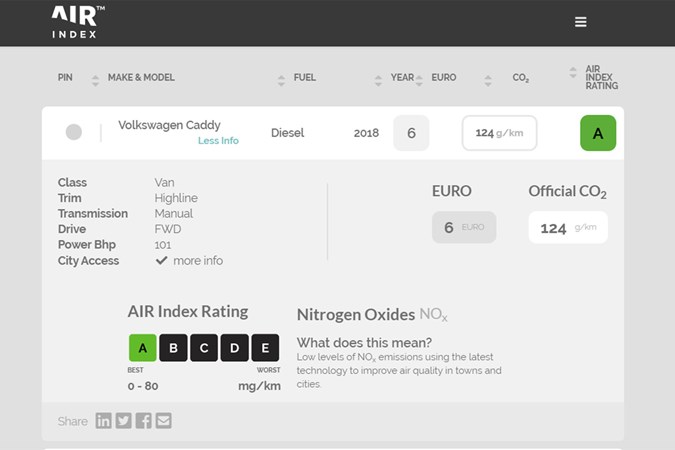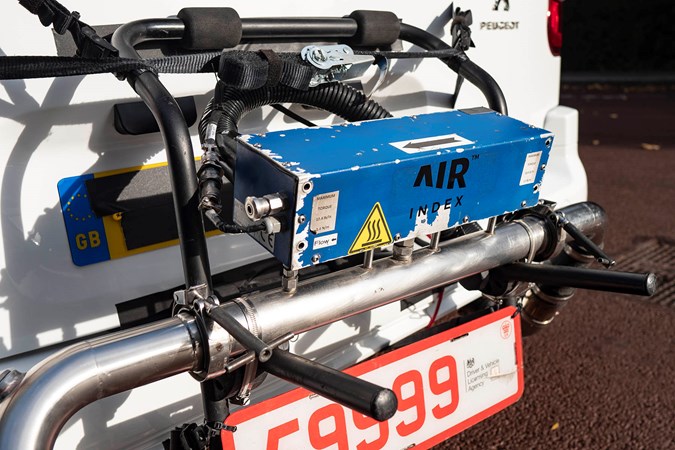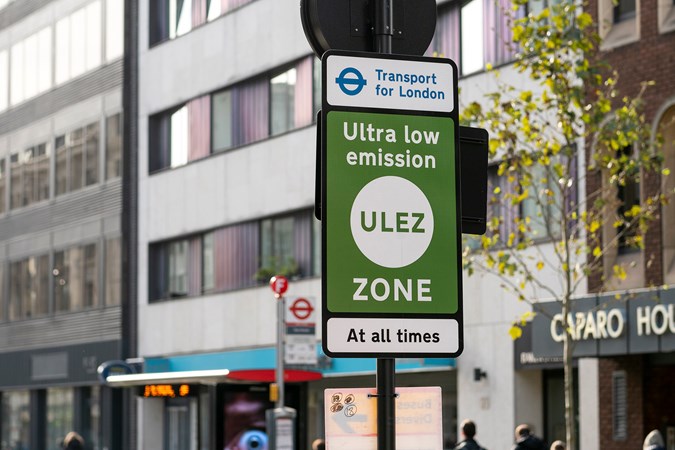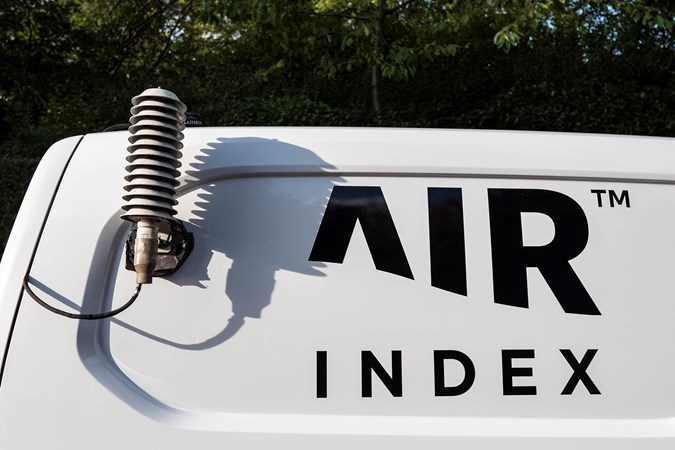After the emissions scandal of 2015-16, you would think that manufacturers would have cleaned up their act where exhaist pollution is concerned. Stricter Euro 6 standards – 6d, 6d-Temp and RDE2 – are generally shown to the consumer as a reduction in CO2; but behind the measurements is another byproduct that is prevalent in diesel vehicles – nitrogen oxide, or NOx.
Like carbon monoxide and dioxide – now a common part of motoring language as this pollutant affects taxation as well as technical standards – how this waste material from burning fossil fuels affects the environment is better understood.

As a local pollutant, nitrogen oxides are more directly linked to health of humans, animals and plants alike. NOx emissions create particulates in the air, cause acid rain, fog and smog, as well as contributing to global warming.
So while you might not be seeing any reduction in claimed CO2 output – particularly post-WLTP – from the cars and vans you’re considering buying, the ever-stricter regulations on emissions are working towards cleaner exhausts that will have health benefits, if the technology is working as intended.
But wait… didn’t we have these clean vans a few years ago?
Absolutely. Euro 6 established strong limits for CO2, NOx and particulates in 2014, becoming mandatory in 2016, and it’s undergone a programme of improvements to the test cycle to allow manufacturers – and technology – time to reach those limits in real-world driving.
Even so, manufacturers are naturally going to design systems that even if they can’t achieve perfection in use will work well in laboratory conditions, or in known test cycles that are easy to detect.
So a new independent testing body has taken the model of Euro NCAP and decided to apply it to urban emissions in the real world. AIR Index adopts the familiar A-E colour coding seen for CO2 and energy consumption ratings seen on consumer products, and applies it to Euro 6 NOx conformity and overall output.

This isn’t just taking WLTP data and presenting it graphically – it’s a new test, defined under European workshop testing standard CWA17379, with a consistent method of evaluating NOx using portable emissions measurement systems.
The focus is on urban emissions, as defined here: ‘The stringent requirements introduced demand the testing of at least two matching examples of each model, during three separate journeys, including at least five 10km trips conducted on paved roads, at an average speed between 20km/h and 40 km/h.’

What’s less clear is how consistent the testing is between models. Independently sourced vehicles with between 3,000km and 100,000km are used; the amounts of NOx being measured are miniscule, and could be affected by wear in drivetrain and suspension as well as the engine and emissions system.
Although the test stipulates two matching examples of each model are used, it doesn’t appear to ensure different models are tested at comparable mileages and overall condition.
We’re yet to be convinced that this allows a fair comparison between models – it can only reflect the performance of the specific vehicles tested at the time, a useful enough measurement, but potentially damaging and misleading without context.
Casting further doubt on the validity of these tests, the initial release suggested shocking emissions for one model – only to have to withdraw those results, as they applied to a version that was designed for the previous (less stringent) emissions standard.
To have the same impact on consumer behaviour as Euro NCAP, AIR Index needs to be as technically accurate, transparent and trustworthy.
What’s the new AIR Index test revealed?
Quite a lot. Euro 6 emissions for Class I, II and III light commercial vehicles have different permissible amounts of NOx of 80mg/km, 105mg/km and 125mg/km respectively when tested in lab conditions; Euro 6 is also the current benchmark standard for most European cities when allowing diesel vehicles into controlled emissions zones, such as London’s ULEZ, so knowing how well a vehicle performs at low speeds is vital for understanding how effective these zones can be.

However, Euro 6 encompasses several testing and type approval standards – including 6c (WLTP testing), 6d-Temp (RDE, 2x coformity), and 6d (RDE, 1.43x conformity).
It’s an astonishingly broad spectrum of pollution, and confusing matters more with the introduction of real driving emissions – RDE, the lab limits are muiltiplied for road-use tests – the multiplier reducing with each new sub-standard.
Even so, these standards and multipliers are only as good as their testing conditions, so AIR Index sets out to independently verify the performance of real vehicles.
It stands to reason that the largest vehicles with the highest allowable emissions would be the worst performers – but AIR Index indicates a very different reality.
The best, and worst, vans for emissions
To see the full table, you may need to turn smartphones sideways…
| Make | Model | Year | AIR Index rating | Fuel Type | Official NOx limit* | Euro Standard | Actual Urban NOx |
| Volkswagen | Crafter CR35 LWB High Roof 2.0 | 2019 | A | Diesel | 125 mg/km | Euro 6 | 53 |
| Volkswagen | Caddy C20 Highline TDI 2.0 | 2018 | A | Diesel | 105 mg/km | Euro 6 | 70 |
| Peugeot | Partner Asphalt 1.6 | 2019 | A | Diesel | 80 mg/km | Euro 6 | 73 |
| Volkswagen | Transporter T30 Highline TDI BlueMotion 2.0 |
2018 | B | Diesel | 125 mg/km | Euro 6 | 100 |
| Mercedes-Benz | Vito CDI 114 LWB 2.1 | 2017 | B | Diesel | 125 mg/km | Euro 6 | 147 |
| Ford | Transit Custom 300 Limited 2.0 | 2019 | C | Diesel | 125 mg/km | Euro 6 | 260 |
| Vauxhall | Vivaro CDTi 2900 1.6 | 2019 | D | Diesel | 105 mg/km | Euro 6 | 401 |
| Citroen | Relay L3H2 Enterprise BlueHDi 2.0 |
2018 | D | Diesel | 125 mg/km | Euro 6 | 557 |
| Mercedes-Benz | Vito CDI 111 LWB 1.6 (pre-update) |
2017 | D** | Diesel | 125 mg/km | Euro 6 | 566 |
| Mercedes-Benz | Citan 109 Dualiner 1.5 | 2019 | E | Diesel | 105 mg/km | Euro 6 | 902 |
| * Official NOx limit refers to the in-laboratory Euro standards, and NOx limits for vans vary according to vehicle by classification by weight, eg Euro 6 Class I = 80mg/km, Euro 6 Class II = 105mg/km, Euro 6 Class III = 125mg/km ** provisional rating – AIR Index found that when it commissioned tests of the Mercedes Vito CDI 111 LWB 1.6, a simple manufacturer-led update of the vehicle’s emissions management system halved the NOx emissions when tested again. This would be the equivalent of improving the AIR Index rating from ‘D’ to ‘C’ |
|||||||
So, Volkswagen make the cleanest vans?
In this particular test, yes – and if you’re thinking that Volkswagen’s got form for misrepresenting emissions you could be excused for being concerned that this isn’t realistic. This is an independent test, though, and we’re confident it’s a fair measure of how well Volkswagen’s vans clean up their exhaust.
It might be the case that VW have optimised the vans emissions system to perform well in urban environments at the expense of high-speed pollutants, but that’s still good news for inner-city air quality. Unlike needing to pass mandatory Euro 6 emissions standards, or achieve low CO2 for taxation and market preference, there’s no benefit to any firm here in trying to predict the AIR Index test cycle and results and ‘cheat’; these are just really good scores if you care about NOx pollution from your van.
Does an A rating mean a van is green?
Not entirely. It indicates it has the lowest NOx emissions per km in urban driving conditions, which is an important benchmark in achieving environmentally friendly vehicles, but fuel consumption, CO2 emissions and the energy and materials used in production, relative to the overall lifespan of the vehicle, are also significant.
It does, however, illustrate a previously underplayed aspect of pollution that has a direct impact for individuals.

Until all these factors are combined into one rating, we wouldn’t call a van truly ‘green’ unless the AIR Index rating was also backed up by low fuel consumption and CO2 and ideally, a proven long service life, such as good rust resistance, prolonged manufacturer support and long-lived engines and transmissions.
What else could AIR Index accomplish?
It’s great having more than just ‘this vehicle meets emissions standards’ for genuinely responsible firms, but at the moment the testing is too variable. Rather than a scope for a single model’s test covering essentially, a three-year, 60,000 mile window of use, the tests could – and should – be banded, with a 3,000km, 50,000km and 100,000km test for each model that not only reveals how well the vehicles meet their approved standards when new, but how effective those emissions systems can be as the vehicle is used over a typical three-year period.
AIR Index co-founder Nick Molden claims that this level of scrutiny isn’t necessary:
‘The underlying question here is whether that ageing could explain the differences between models – this is definitely not true. While of course components could degrade gradually over time, the vehicles have to meet the official requirements through the useful life of the vehicles (as defined the regulation my mileage/age). These systems are often have in-the-loop NOx sensors so it can adapt to any physical degradation in order to maintain the NOx levels.’
If the real-world emissions of the vans tested can be so wildly out of alignment with their lab benchmarks, though, is it really that likely that these systems will be effective as they age?

Euro 6 type approval now includes mandatory EVAP (fumes from vehicles not in use, like fuel vapor) and more significantly, ISC (in-service conformity) testing on vehicles up to five years old or 100,000km – which, obviously, will take some time to filter through to the real world.
In the meantime AIR Index testing could give an indication of what those results might look like by measuring emissions against an agreed, repeatable standard and publishing the results.
Would knowing your secondhand van’s emissions are better than competitors encourage you to pay more?
Ultimately there’s only one sure way to avoid local emissions from your van – whether you believe independent testing, Euro 6 compliance or staring at the smoke emanating from even relatively new, but hard-worked vans in town – and that’s go go electric. Fortunately, there’s a growing range of electric vans and pickups that could make these tests a thing of the past…
Read more about van and pickup running costs, with Parkers Vans:
>> Ford Transit Custom PHEV – plug-in hybrid van review
>> Most economical medium vans – top ten, by mpg
>> Van fuel economy: Everything you need to know
Just so you know, we may receive a commission or other compensation from the links on this website - read why you should trust us.















